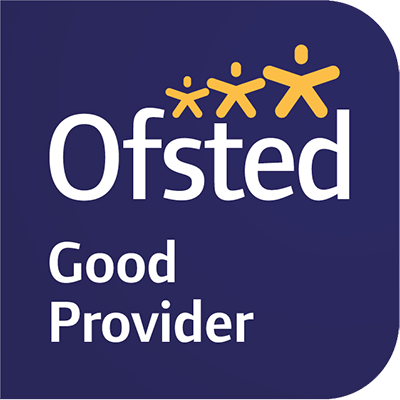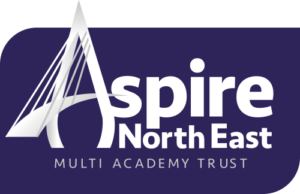Art & Photography Curriculum Overview
Aim
Here at Sandhill View Academy, we aim to securely equip all of our students for life beyond school as successful, confident, responsible and respectful citizens. We believe that education provides the key to social mobility and our curriculum is designed to build strong foundations in the knowledge, understanding and skills which lead to academic and personal success. We want our students to enjoy the challenges that learning offers. And ultimately we want students to ‘Know More, Do More and Go Further’
Our aims are underpinned by a culture of high aspirations. Through developing positive relationships, we work towards every individual having a strong belief in their own abilities so that they work hard, build resilience and achieve their very best.
Intent
The curriculum includes formal teaching through subject areas, assemblies and extracurricular activities. We regularly review content to ensure we continue to meet our curriculum aims. The Art and Design curriculum is planned to enable all students to develop skills in the following areas:
- Technical skills in drawing, painting and making
- The ability to experiment with materials, refine ideas and be confident enough to make mistakes.
- Imagination and creative thinking and making
- Critical analysis of imagery of both contemporary and historical sources
Throughout our programmes of study, every attempt is made to make explicit links to careers and the world of work. In addition to subject specific links, we aim to explicitly reinforce the skills and aptitudes which support employers say are important in the workplace;
- Aiming high, staying positive and resilience
- Communication skills (listening, speaking, presenting)
- Teamwork and problem solving,
- Creativity and thinking skills
- Self-management and leadership
The Art and Design department ensure that students can develop skills that are useful in the world of work including teamwork, communication, creative thinking and problem-solving skills. We have worked closely with outside agencies for a number of years to develop visual literacy and language skills as well as techniques in making artworks. Some examples of this include the ARTiculate project with the Laing Art gallery, The Big Draw annual event across the school, annual attendance at the Creative Careers fayres at Baltic Centre for Contemporary Art and various workshops and talks working with practising artists. The promotion of the importance of the creative careers and its impact in the local economy is included in lessons and information is displayed throughout the department.
The British values of democracy, the rule of law, individual liberty, and mutual respect of those with different faiths and beliefs are taught explicitly and reinforced in the way in which the school operates. Students are taught to maturely debate and discuss contemporary issues. Students are aware of how artists explore identity and are respectful of others’ views. They are considerate when creating artwork, understanding the responsibility they have.
Covid Recovery to ‘unlock learning’
We have built Covid Recovery into our long and short term planning by including Jump In (connect) activities to encourage deeper thought and debate in lessons and are continually updating these wilth relevant topics to reflect both contemporary culture and historical events. We have ensured that all planning addresses gaps in both skills and discussion techniques for all year groups, to not only improve on techniques but also creative thinking skills in order to create personal artwork. The GCSE project structure will offer scaffolded support and challenge and the new BTEC course for year 10 will ensure a more vocational aspect will be introduced for some learners. We feel this will help to ‘unlock learning’.
Literacy
We know that students who read well achieve well. As such all subject areas are committed to providing regular opportunities to read extensively. In Art and Photography we provide opportunities for students to read as part of connect activities and within the classroom environment with a larger focus on this particularly with artist research in order to develop independent projects. We also have aspirations for our students to use ambitious vocabulary and are using frayer models and ‘push’ techniques in lessons. Our team has embedded learning outside the classroom with developing literacy with annual ARTiculate projects with the Laing Art Gallery and regular visits to the archive at Baltic Contemporary Art gallery working with librarians to develop knowledge. All curriculum areas use literacy end point document which details yearly end points for reading, writing and oracy to ensure consistent literacy skills embedded across the curriculum.
Sequence and structure
Our curriculum is split in to Key Stage 3 (years 7, 8 and 9) and Key Stage 4 (years 10 and 11).
KNOW MORE: Key Stage 3 Curriculum
KNOW MORE: Our Key Stage 3 Curriculum includes the following areas of study:
KS3 Half Term 1 Half Term 2 Half Term 3 Half Term 4 Half Term 5 Half Term 6 Year 7 Introduction to Art and Design: Explore the importance of creative careers in architecture, craft and design and the importance of the over time. Show off your drawing skills: observational drawing and painting.
Portraiture: workshops in a variety of materials to explore mark making. Explore a variety of ways to develop creative ideas, recording in sketchbooks.
Portraiture: Who is Paper Monster? How do graffiti artists respond to portraiture and how has this changed over time?. Using a variety of media to create a personal outcome
Childhood project: How does Sarah Graham create work inspired by memory? Students understand the importance of developing work inspired by their own place in society, communicating with family to collect ideas.
Observational drawings, paintings and collages inspired by your childhood! Increase proficiency in execution of using media such as collage, painting and drawing to explore and record ideas.
Personal Response: Combining skills to develop ideas. Students learn how to make indiviual choices to improve their own creative process to express their own ideas and thoughts.
Year 8 What is Pop Art? Exploring how Pop artists influenced the art world from 1960 to 2019 to develop a critical understanding of their work. Who is Roy Lichtenstein? Technical drawing in the artist’s style. Learn about techniques used in various graphic and pop art movements and how to develop creative and technical skills. Pop Portraits: using photoshop and grid drawing, create your own Pop Painting expressing reasoned judgments that can inform their own work What is expressive art? Explore the properties of watercolour paint and how it can tell a story, broadening their critical and technical language. Who is Loui Jover? Using the influence of shadows and silhouettes, create your own paintingswhilst strengthening the visual the impact of your own and the artists work. An Injection of colour! Personally respond to artists’ work using collage, photography and colour work. You will make individual choices and gain mastery in painting and creative collage Year 9 Protest Art What is graffiti and what is the purpose?
Study the origins aswell as how to create skilled and attention grabbing lettering fonts, considering colour theory and typography.
Protest Art Using Ben Eine’s lettering pieces, create issue-based artwork thinking about the language used to portray a message to have an impact on society.
Protest art: personal response Explore how artists have used protest over time and consider themes important to you to create artwork.
My Identity: How can having tattoos change our perceptions? Develop drawing techniques, evidenced in the portfolios of Tattoo artists to develop tattoo designs and study the history of why people choose to have tattoos
Using the work of Ramon Maiden, explore techniques in pen, paint and photography on primary and secondary photographs.
My identity: Can you create 3D photo sculptures using thread to create an emotion or hide a personality like Maurizio Anzeri? Por create digital artwork inspired by Kruger? Personal Response: Combine the techniques with taught portrait skills to develop a meaningful artwork inspired by your identity.
KNOW MORE: Key Stage 4 Curriculum
Our Key Stage 4 Curriculum
At Key Stage 4 students follow the AQA Art and Design and Art and Design (Photography).
KS4 Half Term 1 Half Term 2 Half Term 3 Half Term 4 Half Term 5 Half Term 6 Year 10 GCSE
Art: Who is Shepard Fairey? Use a variety of techniques to explore his art work. Photo: Abstract Portraits: Hands: Who is John Coplans?
Who is Florian Nicolle? Understand how technical skills in portraiture can be refined using expressive art techniques
Photo: Abstract Portraits: Hands: Who is Tim Booth?
Personal Response: Independently explore the artist’s work to create your own work. Photo: Fantastic and Strange Project (contemporary artists/ photographers study )
Art: Disguise Study the work of Sandra Chevrier to explore issues linked to empowerment and mental wellbeing
Photo: Fantastic and Strange Project (contemporary artists/ photographers study )
Art: Disguise Students choose an artist to explore linked to the theme experimenting with their chosen medium.
Photo: Fantastic and Strange Project personal response
Art: Disguise Personal response development, preferably in exam conditions to prepare students for independent working
Photo: Body confidence mini project
Year 11 Art & Photography GCSE
GCSE Mock exam project inspired by past papers to explore materials and processes linked to a theme such as ‘Food’, Disguise or ‘Messages’. BTEC: complete ‘specialist pathways in art and design’ unit
Explore how artists and designers create work, making a personal response to each Externally Set Assignment (Exam Prep) 10 hours of ESA time. Work is assessed and moderated.
DO MORE: Milestone assessment end points
| Year Group | Basic
(Lower Ability End Points) |
Clear
(Middle Ability End Points) |
Detailed
(Higher Ability End Points) |
| 7 | Students should be able to recognise and name some different art forms and characteristics. They should demonstrate their ability to evaluate the key qualities of an artwork with the use of some key words.
Students should show their ability to use a basic range of materials and techniques demonstrating some accuracy in their outcomes. |
Students should consistently be able to recognise and name different art forms and characteristics. They should demonstrate their ability to evaluate the key qualities of an artwork with the effective use of specialist key vocabulary.
Students should show their ability to use and control a selection of materials and techniques, demonstrating consistent accuracy in their outcomes. |
Students should demonstrate a highly developed ability to effectively name and discuss different art forms and characteristics.
Students should extend their control of artistic elements by creating a highly developed and creative outcome as well as experimenting with a variety of materials, demonstrating creative, successful outcomes. |
| 8 | Students should show some improvement in accuracy of their artwork when recording from memory, observation and imagination to develop ideas towards an outcome.
Students should demonstrate their ability to evaluate some of their own work to improve upon and realise their own creative intentions. They should be able to create some artwork and representations in response to their study of their theme or artists. |
Students should consistently improve accuracy of artwork when recording from memory, observation and imagination to develop ideas towards an outcome.
Students should consistently and effectively demonstrate their ability to evaluate their own work to improve and realise their own creative intentions. They should consistently and effectively be able to create imaginative artwork and representations in response to their study of the theme or artists. |
Students should show a highly developed ability to demonstrate how they creatively and effectively improve the accuracy of their artwork when recording from various sources to develop ideas towards an outcome.
Students should have a highly developed ability to effectively and creatively evaluate their own work to critically inform improvements in their own work and realise their own creative intentions. Students work should demonstrate a highly developed ability to create imaginative artwork in response to a theme or artist. |
| 9 | Students should be able to use some drawing and designing techniques to record observations as they develop towards an individual outcome.
Students should work with some independence, showing an understanding of some artistic elements within an artists’ work to inform the way they use materials in their own practice. Students should reflect, evaluate and explain upon some artistic qualities within their own work. |
Students should consistently demonstrate their ability to successfully use drawing and designing techniques to effectively record observations as they develop towards an outcome.
Students should work independently showing a consistent understanding of the artistic elements present within an artists’ work to inform the way they use materials. Students should consistently and effectively reflect, evaluate and explain the qualities of their own artwork and outcomes. |
Students should show a highly developed ability to demonstrate drawing and designing techniques which effectively record observations as they develop towards a creative, personal outcome.
Students should confidently work independently, showing a highly developed understanding of artistic elements present within an artwork and should use these to inform the way they use materials. Students should consistently, effectively and critically reflect, evaluate and explain the qualities of their own artwork and outcomes. |
| 10 /11
|
GCSE Criteria Needs to be followed for both years.
Approx. Levels 2/3 Some ability to develop ideas through purposeful investigations. Some ability to demonstrate critical understanding of sources. Some ability to refine ideas. Some ability to select and experiment with appropriate media, materials, techniques and processes. Some ability to record ideas, observations and insights through drawing and annotation, and any other appropriate means relevant to intentions, as work progresses. Some ability to present a personal and meaningful response and realise intentions. Some ability to demonstrate understanding of visual language. |
GCSE Criteria Needs to be followed for both years.
Approx. Levels 4/5/6 A consistent ability to effectively develop ideas through purposeful investigations. A consistent ability to demonstrate critical understanding of sources. A consistent ability to thoughtfully refine ideas. A consistent ability to effectively select and purposefully experiment with appropriate media, materials, techniques and processes. A consistent ability to skilfully record ideas, observations and insights through drawing and annotation, and any other appropriate means relevant to intentions, as work progresses. A consistent ability to competently present a personal and meaningful response and realise intentions. A consistent ability to demonstrate understanding of visual language. |
GCSE Criteria Needs to be followed for both years.
Approx. Levels 7/8/9 A highly developed ability to effectively develop ideas through creative and purposeful investigations. A highly developed ability to demonstrate critical understanding of sources. A highly developed ability to thoughtfully refine ideas. A highly developed ability to effectively select and purposefully experiment with appropriate media, materials, techniques and processes. A highly developed ability to skilfully record ideas, observations and insights through drawing and annotation, and any other appropriate means relevant to intentions, as work progresses. A highly developed ability to competently present a personal and meaningful response and realise intentions with confidence and conviction. A highly developed ability to demonstrate understanding of visual language. |
GO FURTHER: Skills Builder
We are also explicitly embedding transferable ‘Skills Builder’ skills such as problem solving, aiming high and teamwork to prepare our students for higher education and employability skills for the future. This year in Art we will focus on Creativity, Aiming High and Leadership. Our young people have demonstrated that taking part in creative activities both in and outside of the classroom can not only boost their self esteem but they can also help others. We encourage our young people to teach skills to others and work together to learn about different cultures and events through discussion and group work. Projects from Year 7 upwards have been designed to creatively explore a variety of materials but also to refine skills to aim high to take pride in not only their final pieces but also to the process displayed in their sketchbooks.
How does our Curriculum cater for students with SEND?
Sandhill View is an inclusive academy where every child is valued and respected. We are committed to the inclusion, progress and independence of all our students, including those with SEN. We work to support our students to make progress in their learning, their emotional and social development and their independence. We actively work to support the learning and needs of all members of our community.
A child or young person has SEN if they have a learning difficulty or disability which calls for special educational provision to be made that is additional to or different from that made generally for other children or young people of the same age. (CoP 2015, p16)
Teachers are responsible for the progress of ALL students in their class and high-quality teaching is carefully planned; this is the first step in supporting students who may have SEND. All students are challenged to do their very best and all students at the Academy are expected to make at least good progress.
Specific approaches which are used within the curriculum areas include:
- Differentiated and feedback tasks outlined clearly on the board or in teaching resources
- A variety of techniques, processes and materials are taught in art and photography covering forms such as 3D, collage, photo manipulation in physical and digital forms, painting, drawing and sewing
- Group work and discussion tasks to develop confidence in presentation and literacy skills
- Work is always uploaded onto TEAMS in order for both students and parents to work outside of the lesson
- Art club for all take place at lunch time and intervention takes place after school twice a week for GCSE
How does our curriculum cater for disadvantaged students and those from minority groups?
As a school serving an area with high levels of deprivation, we work tirelessly to raise the attainment for all students and to close any gaps that exist due to social contexts. The deliberate allocation of funding and resources has ensured that attainment gaps are closing in our drive to ensure that all pupils are equally successful when they leave the Academy. More specifically within the teaching of Art and Design, we;
- We aim to provide not only a space to teach technical skills in art, craft and design in order to build a sense of pride, resilience and creativity; but also a space where young people feel safe and comfortable to express how they feel about their society and what is happening in their world, whilst also developing empathy and understanding to others. Our subject encourages students to think creatively and develop transferable skills such as critical thinking, imagination and problem solving to equip them to lead in life beyond the classroom.
- Due to accessing funding for disadvantaged students we ensure all these students are equipped with a GCSE art pack to promote resilience, pride and independence in their work.
- Our GCSE results have shown no or little gap in attainment for disadvantaged students in comparison to those that are not and students with SEN often out perform their targets each year due to the accessible nature of our creative approach to teaching.
How do we make sure that our curriculum is implemented effectively?
- The Art and Design curriculum leader is responsible for designing the Art and Design curriculum and monitoring implementation.
- The subject leader’s monitoring is validated by senior leaders.
- Staff have regular access to professional development/training to ensure that curriculum requirements are met.
- Effective assessment informs staff about areas in which interventions are required. These interventions are delivered during curriculum time to enhance pupils’ capacity to access the full curriculum.
- Curriculum resources are selected carefully and reviewed regularly.
- Assessments are designed thoughtfully to assess student progress and to shape future learning.
- Assessments are checked for reliability within the department and across the Trust.
How do we make sure our curriculum is having the desired impact?
- Examination results analysis and evaluation, reported to the senior leaders and the local governing body to ensure challenge
- Termly assessments-analysis and evaluation meetings
- Lesson observations
- Learning walks
- Book scrutiny
- Regular feedback from Teaching Staff during department meetings
- Regular feedback from Middle Leaders during curriculum meetings
- Pupil surveys
- Parental feedback
- External reviews and evaluations





